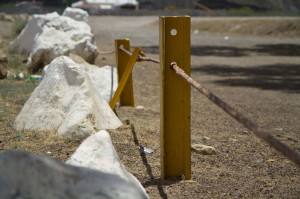Bienvenidos, Monsoon Storms
|
How pleasant it is to say “adios” to scorching June. As possible proof, during this June, my Rio Rico, Arizona suffered through ten consecutive days of torrid highs between 96 and 105F, according to my possibly trusty patio thermometer. This June’s sun was also so bright and hot that I spent far too much time hibernating indoors with all my blinds pulled down. But June finally has eased into July, which has become, perhaps, one of my favorite months here. Because the arrival of July means it will bring Monsoon storms.
Like the one I experienced just the other day, whose vivid lightning strokes and following thunderclap nearly scared me silly. I’d witnessed that first flash of lightning while I was foolishly standing under my metal garage door.





